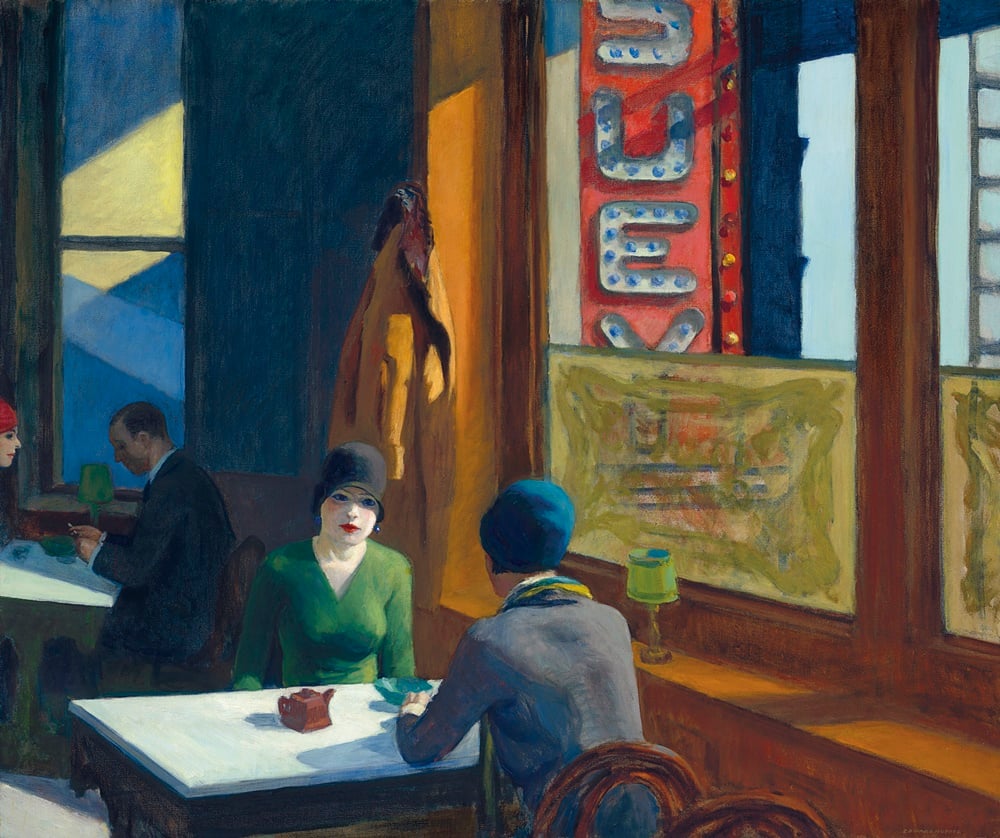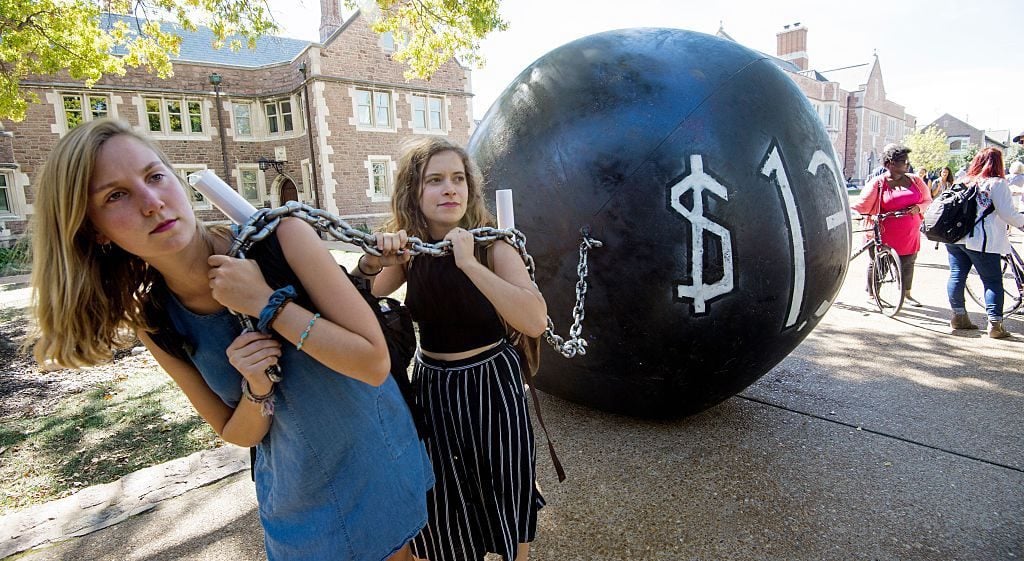Analysis
What Happens When a Collector Promises to Donate an Artwork and Then Flips It at Auction Instead? It’s More Harmful Than You Think
Broken promises to museums are on the rise, and the collateral damage is hurting emerging artists and galleries as much as institutions.

At Sotheby’s contemporary evening sale in New York on May 19, artist Dana Schutz briefly plunged the salesroom into pandemonium. Civil Planning(2004), one of her riotously colored dreamscapes, sparked such frenzied bidding that it caused preternaturally smooth auctioneer Oliver Barker to visibly flinch. Minutes later, the painting—consigned by the estate of the late management consultant David Teiger with a high estimate of $400,000—sold for a cool $2.4 million. The price set a new world record for Schutz, elicited a hearty swell of applause from the audience, and secured a windfall for Teiger’s foundation.
There was only one problem. According to Zach Feuer, Schutz’s gallerist at the time she made Civil Planning, he only agreed to sell the painting to Teiger because of a promise that the collector would immediately donate it to the Museum of Modern Art.
Elaborating to artnet News about an Instagram post he made after the Sotheby’s sale, Feuer described Teiger calling him two days after viewing Civil Planning with one of the museum’s curators in tow: “He says, ‘Invoice me. I don’t need any special paperwork. This is going right to MoMA.’” Feuer obliged, and Teiger paid $15,000 for the work. But within weeks, the dealer received another call from the collector, in which Teiger said, in Feuer’s recollection, that “MoMA doesn’t really want a Schutz,” meaning he would simply keep the painting for himself. And 15 years later, his foundation reaped a colossal reward as a result. (Inquiries to representatives from MoMA and the Teiger Foundation were not returned by publication time.)
Such a reversal of fortune is not unique in the 21st-century art market. But some say it is becoming increasingly common in an industry where competition for the most sought-after artists is fiercer than ever—and so is the temptation to cash in on that competition’s prizes. Earlier this year, a similar conundrum bubbled to the surface when the late travel-industry tycoon Barney Ebsworth’s living trust consigned at least some of the same 65 significant works he had pledged to the Seattle Art Museum in 2007 to Christie’s.
Among them was Chop Suey (1929), one of the last major Edward Hopperpaintings in private hands, which generated $91.9 million at auction in November. The full extent of Seattle’s loss is not known, as the museum refused to provide reporters from the Seattle Times a full list of works to cross-reference against the Christie’s catalogue last year, and representatives from the auction house, the museum, and Ebsworth’s living trust collectively declined to comment on the matter.
But reneging on pledged gifts is not a phenomenon limited to premier auction consignors. Conversations with current and former gallerists, artists, and advisors confirm that false promises about institutional donations have been further warping the primary market to the advantage of the wealthy and the unscrupulous for years. And a longer look into the trend provides a vivid view of some of the trade’s deepest and most enduring fault lines.

Edward Hopper, Chop Suey (1929). Courtesy of Christie’s Images Ltd.
The Spirit of Competition
As the number of millionaire and billionaire buyers rises and contemporary art becomes more visible in popular culture than ever, the clash over desirable artworks has hit a fever pitch. And that’s where the problem begins.
“I don’t know how you do it when you have 30 people for every painting,” says art adviser Candace Worth of some gallerists’ current dilemma with their most sought-after artists. “My dealer friends call and say, ‘I got yelled at four times today by clients calling up and screaming, ‘How could you not sell me this painting?’”
But finite holdings force gallerists to choose somehow, and the hierarchical pressures of the art world prevent them from defaulting to the first-come-first-served principle powering typical retail markets. Instead, dealers tend to try to protect their artists’ careers by placing in-demand works with esteemed collectors—ones whose connections can boost an artist’s prestige, who might collect in depth, and who, at the very least, seem unlikely to flip their new acquisitions at the earliest profitable opportunity.
In this scrum, the surest way for a willing buyer to stand apart is to promise to donate the work in question to a major museum. Yet this well-known strategy can be abused, and Teiger is hardly the only buyer alleged to have taken advantage of it in recent years.
Lisa Cooley, whose Lower East Side gallery operated from 2008 to 2016, tells a similar story about a collector who leapt to the top of a 200-person waiting list for one of her artists by pledging to donate the piece to a renowned contemporary museum in Australia. “He never said, ‘I want to be able to pick the work,’” Cooley notes. “He just said, ‘Get me a work.’” She eventually convinced the reluctant artist to break from their normal process by prioritizing this client for the greater good of a major institutional placement.
But some time after the buyer paid and took delivery of the piece, his attitude changed. “My memory is a little hazy,” Cooley says, “but he said something like, ‘Well, it’s not really an A-plus painting, so I decided not to donate it to the museum.’” As a kind of consolation prize, he pledged to include the work in an exhibition that would travel to another Australian institution. Yet Cooley confirmed that this lesser offer would not have pushed him to the front of the line.

The Museum of Modern Art’s entrance at 53rd Street. Photo © 2006 Timothy Hursley.
Top-Notch Works, Rock-Bottom Prices
An important component of these sagas is the quality of the works at their respective centers. As Worth puts it, “You can’t just pack anything up in bubble wrap and drop it off at MoMA on the third floor.” Institutions, especially those with sterling reputations (and the luxury of choice), rigorously vet proposed gifts before deciding whether or not to accept them. In tales of ghosted institutional gifts, then, the affront isn’t just that collectors went back on their word. It is that they secured the very best work those in-demand artists produced.
Even more distressing, the galleries and artists involved in these deals frequently permit enormous discounts to incentivize donors to acquire pieces on behalf of favored institutions. Economically, it’s a straightforward gambit: accept (much) less money now to place a work in a major museum, knowing you can then raise prices and expect more buyers because of the artist’s illustrious new institutional affiliation. For artists who have always dreamed of having their work acquired by a revered institution, the calculus can be even simpler. That sincere desire alone can compel them to accept significantly less for their work than they would otherwise.
Another unfortunate example crystallizes these tensions. In an interview with artnet News, one rising artist, who asked not to be named due to the sensitivity of the matter, related that an “established and eager young collector” on multiple American museum boards had recently offered to buy a work of theirs priced “well over six figures” on behalf of a major New York museum whose desire for the piece outstripped its budget. But in exchange for his largesse, the self-styled benefactor demanded a discount of 40 percent, far steeper than the 10 to 15 percent discount the artist was accustomed to accepting in standard deals with private collectors.
Despite serious misgivings, the artist approved the sale. While the buyer paid and took possession, the artist’s gallery worked with the museum to finalize the terms of the gift. Upon the paperwork’s completion, though, the buyer refused to return calls and correspondence from all parties involved in the transaction, including the artist and the museum’s chief curator. “They were offered a buy-back, another piece in trade, a private commission of the same scale for free, and the option of keeping the piece in their own home after cementing a future gift,” the artist wrote in an email.
But the buyer was unmoved, offering no explanation other than that “they’d changed their mind” and would hold onto the painting they’d rightfully paid for. “I never would have sold that particular work to a private collection, and certainly not for that price,” the artist explained. “So you’re left feeling like you’ve been hustled.”
Feuer echoed this sentiment regarding the discount he gave to Teiger on Civil Planning: “David didn’t need the money. This was about getting the best thing and potentially winning the deal.”

Students pull a mock “ball and chain” representing the $1.4 trilling outstanding student debt outside the second presidential debate 2016. Image courtesy Paul J. Richards/AFP/Getty Images.
By Any Means Necessary
Although the perils of ambition are real, these stories are also driven by something much more elemental and relatable: the pressure to simply survive. If young galleries are lucky, they might have one runaway success on their roster—and then, only for a limited time before the artist moves onto a bigger gallery. That means they don’t always have the choice to reject buyers after being burned.
Lisa Cooley, for one, admits that she struck another deal with the collector who reneged on his promised donation to the Australian museum, though with a different artist and sans any dubious pledges. (Cooley says she would have gotten an attorney involved in the deal had the latter come up again.) “Plenty of other people were still selling to him, including major international galleries that don’t put up with nonsense, so I figured it was a one-off thing,” she says of his broken institutional promise. If nothing else, at least he paid quickly, which was more than could be said for most clients.
Similarly, the artist who granted the 40 percent discount to the deadbeat donor admits that they did so partly “to stay afloat and out of debt.” But they also did it to be a team player. “In the end, the gallerist leaned on me hard, telling me selling this piece would be the difference between the gallery staying open for the next year [and] helping all the represented artists—or closing,” they wrote. “I honestly felt that I had no choice.”
“This is a theme with predators,” the artist continued. “Prey on the weak. It’s why so many of these less ethical collectors prey on young galleries and artists. Because of desperation. Because of vulnerability. Because they can.”

A courtroom setup awaiting a witness. Photo: Friso Gentsch/dpa (Photo by Friso Gentsch/picture alliance via Getty Images)
Accountability Vacuum
Granted, not every donor who reneges on a promise does so out of greed. Sometimes a change in institutional leadership or mission can give a patron reason to reconsider a pledge. Sometimes bad behavior by a museum can make a would-be donor want to avoid guilt by association. Sometimes financial circumstances change drastically enough between a promise and its fulfillment to create an existential threat to the donor (or at least their solvency).
“You have market crashes, recessions, other business issues for a family,” notes attorney Barbara Lawrence, a partner and chair of trusts and estates at Herrick, Feinstein LLP. Such dire circumstances create an enforceability dilemma, particularly in light of the negative publicity a lawsuit would generate. “The question is, if there is something so extreme that a family needs a promised gift for their livelihood, is a museum going to go after them and be seen as the bad guy?”
Institutions, galleries, and artists alike must undertake this same pragmatic analysis even when a gift vanishes because of blatant misconduct. Chelsea gallerist Julie Saul, for example, had fully finalized the donation of a video to a major New York institution on behalf of a client, only for the client to renege so that she could give the work to her son instead. “She said she never heard back from us about [the gift], but we had a whole chain of emails about it that we showed her,” Saul told artnet News.
Still, even with this evidence in hand and the knowledge that this episode “makes me look like an idiot” to the museum and her artist, Saul never considered taking formal action against the collector. Museums often decline to sue donors who renege for unsympathetic reasons as well, since being seen as a litigious institution could have a chilling effect on future donations.
Because these disputes are hashed out behind closed doors, the professional standards and laws surrounding them also remain relatively unclear. Lawrence points out that, although American public policy favors finding institutional pledges to be legally binding, several theories exist for what makes them enforceable. (One theory requires the museum to take an action that shows its “reliance on the pledge,” such as discussing it in press materials.) The Association of Art Museum Directors also has no specific guidance about how to handle disappeared donations in its charter, leaving each member institution to fend for itself.
For all these reasons, Lawrence defines the choice to take action against a reneging donor as a “business decision.” Is even the best possible outcome worth its cost and potential fallout? And if so, how realistic is that outcome anyway?
This is the sense in which revoked donations can serve as a microcosm of the art market, and arguably the world economy as a whole, in 2019: the most well-off leveraging their advantages against those closest to the abyss, knowing that the latter group has few resources, and perhaps even less incentive, to pursue justice. Accountability, therefore, is in scarce supply for unscrupulous buyers, who know the score full well. And as long as this remains true, emerging galleries and artists would do well to invert the market’s favorite ancient Latin standby: Seller, beware.

Follow artnet News on Facebook:
Want to stay ahead of the art world? Subscribe to our newsletter to get the breaking news, eye-opening interviews, and incisive critical takes that drive the conversation forward.
SHARE

No comments:
Post a Comment